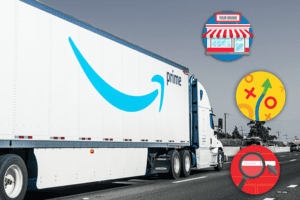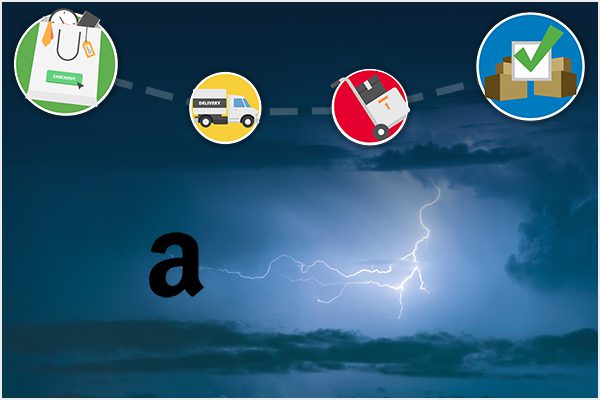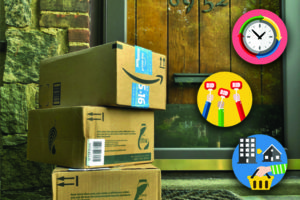Welcome to Part 4 of our Amazon Prime Day 2020 Prep series. For this finale article, we’ll be covering digital advertising strategies you can utilize before, during, and after Prime Day to amplify your brand’s success. If you missed the previous parts of this series, you can find them below:
- Amazon Prime Day 2020 Prep (Part 1): The New Normal for Amazon Prime Day in 2020
- Amazon Prime Day 2020 Prep (Part 2): Prime Day Inventory Planning + Merchandising
- Amazon Prime Day 2020 Prep (Part 3): SEO + Retail Readiness
We also dive deeper into this content in our Amazon Prime Day 2020 Prep webinar series, which is going on weekly until August 12. Register to catch the final session and watch replays of the first three sessions over on the event page!
Approaching Amazon Prime Day 2020
 Your Prime Day success hinges upon how well you prepare. Much of this preparation happens within the four weeks leading up to Prime Day. Historically, this would be many marketers’ main focus during the month of June, with Prime Day occurring in mid-July.
Your Prime Day success hinges upon how well you prepare. Much of this preparation happens within the four weeks leading up to Prime Day. Historically, this would be many marketers’ main focus during the month of June, with Prime Day occurring in mid-July.
According to reports from CNBC, Geekwire, and BusinessInsider, however, Amazon Prime Day 2020 has been rescheduled to October in the wake of the ongoing coronavirus pandemic. Although no official date has been announced, it’s looking like the week of October 5th is the tentative new timeline.
Before COVID-19 took hold, it was assumed that Prime Day would occur on July 12th. Then, it got postponed to August. Then September. And now it’s been pushed back again to give time for the marketplace giant to get all its shipping and fulfillment ducks in a row, including the hiring of more than 175,000 new workers.
Regardless of the exact date that Prime Day occurs, an important chunk of your preparation will take place in these four weeks leading up to the shopping event. There are many strategies that you can leverage and implement into your account during this timeframe.
Automatic Campaign Creation (Focus ASINs)
Now is the time to position your ASINs for Prime Day success. Optimize your campaigns for efficiency before the Prime Day traffic arrives.
If your existing automatic campaigns contain only your focus ASINs for Prime Day, you won’t need to launch new auto campaigns. Automatic campaigns are the only way to show on Amazon Deals pages during the event.
Sponsored Brands + Your Amazon Store

Formerly known as Headline Search ads, Sponsored Brands campaigns are a keyword-targeted, cost-per-click (CPC) advertising solution focused on building brand awareness, increasing the visibility of your catalog, and driving sales to your products on Amazon.
Amazon Stores offer qualified brands the chance to design and create multi-page stores that showcase their brand’s products on desktop, mobile, and tablet. These stores provide an enhanced, brand-centric shopping experience where shoppers see a curated collection of your brand’s products, allowing you to create a truly immersive brand experience and eliminates competition from competitors.
Our Executive Guide to Amazon Stores + Sponsored Brands offers a comprehensive overview of the latest developments with Amazon Sponsored Brands and Amazon Stores. In this report, you’ll uncover how to drive exponential traffic growth to your Amazon Store, keys to synergizing your Store & campaigns for awareness & conversions, and more! Claim your copy to take the next step to conquering your competition and surpassing your profitability goals.
DSP Prospecting
Why should you consider DSP prospecting? It’s the perfect way to introduce shoppers to your brand ahead of the big day, and it also provides advances targeting capabilities. Amazon provides Lifestyle, In-Market, and Lookalike audiences for DSP prospecting campaigns.
Layering on demographics specific to your target audience allows you to be even more targeted. These shoppers can then be retargeted during and after Prime Day (more on that later).
Now that you know the value of DSP prospecting, how will you implement it for your campaigns? Some strategies include:
- Utilizing Amazon’s In-Market audiences to find shoppers who have recently searched for products within your category
- Leveraging custom image creative to catch shoppers attention
- Driving traffic to your Amazon storefront in order to introduce them to your brand and product selection
The Day(s) of Prime Day
A watched pot doesn’t boil – but this saying doesn’t apply to your campaigns. As part of your day(s)-of strategy, be ready to constantly monitor your campaigns to ensure they are hitting budgets.
You’ll want to consider leveraging Amazon DSP for the big day. This could mean increasing your daily budget cap for prospecting or launching retargeting for shoppers who have previously viewed your products but have not purchased – whatever it takes to fuel shoppers who you’ve brought into your funnel through your prospecting and search campaigns further down the funnel until they make a purchase (or retargeting to them until they purchase again).
Once Prime Day has ended, don’t forget to turn off your Prime Day-specific campaigns. This also means deleting your Deals store sub-page if no other deals are running and deleting or editing the Featured Products sub-page as needed.

Our Amazon Prime Day 2020 Prep video series covers everything brands need to know to navigate the “new normal” for Prime Day. Watch the four-part video series today to uncover strategies & insights around everything from inventory planning to merchandising and SEO readiness to digital advertising strategies.
Keeping the Momentum Post-Prime Day and Into the Holidays
Retargeting is a key component of your holistic Amazon Prime Day 2020 strategy. There are two main types of post-Prime Day retargeting: retargeting past purchasers and retargeting shoppers who viewed your products with Amazon DSP.
Retarget Shoppers Who Purchased Your Products
With Prime Day being later in the year and closer to the holiday season than ever, the timing will be perfect for you to re-engage your Prime Day shoppers with valuable holiday-focused deals. You can also utilize Sponsored Display to retarget shoppers who previously purchased your products.
Retarget Shoppers Who Viewed Your Products
As we mentioned earlier, your DSP prospecting campaigns can be used to retarget high-intent shoppers. To do this, all you’ll need to do is create DSP audiences around shoppers who viewed any of your products in the past 30 to 90 days.
You should also exclude shoppers who have purchased your products recently because these shoppers should already be covered with your Sponsored Display past purchasers retargeting.
Prime Day Beyond Amazon
 Focusing on channels besides Amazon during this shopping event can be a great way to capitalize on shoppers’ generalized higher intent to buy.
Focusing on channels besides Amazon during this shopping event can be a great way to capitalize on shoppers’ generalized higher intent to buy.
You can use Google Search or Display and social media to drive traffic to your Amazon Store. When you use Amazon Attribution, you’ll be able to attribute ads and conversion events across social, search, email, display, and video with clear reporting.
Even if you’re not running a Prime Day promotion, you can make sure that your Amazon product pages are fully optimized so that consumers who happen upon your listings while doing Prime Day shopping are seeing your brand at its best. You can learn more about this type of preparation in part 3 of this series.
As we learned in Part 1 of this series, the halo effect plays an important role in Prime Day. This means that if you’re not on Amazon at all, you can still benefit from Amazon Prime Day! In fact, retailers outside of Amazon have seen an average 66% lift in revenue during past Prime Days. 7 in 10 U.S. Prime Day shoppers will look outside of Amazon to comparison shop. On top of that, businesses off Amazon that run discounts on Prime Day see an average 40% increase in sales.
Knowing this, brands not selling on Amazon still need a strategy for Prime Day. Leverage sales on your .com site where you can, utilize email to re-engage customers, and increase aggression for your top category search terms on Google in order to stay competitive.



